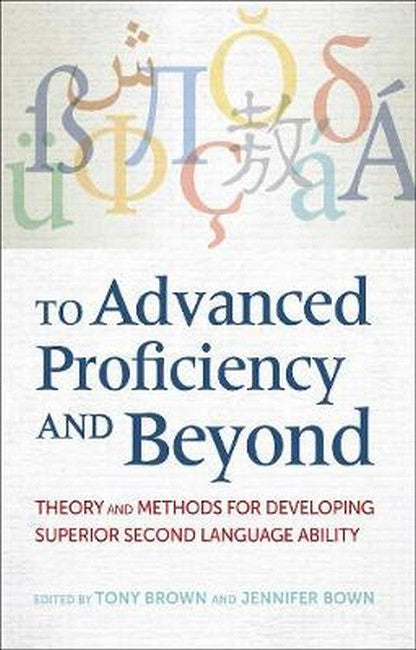Introduction: Past Context, Present Focus, Future Directions: Shifting Focus from Intermediate Skills in Classroom Training to Advanced/Superior and BeyondCynthia L. Martin Part One: Defining Characteristics of High-level Language Learning and Learners 1. Experience with Higher Levels of ProficiencyBetty Lou Leaver and Christine Campbell 2. L1, L2, and Cognitive Development: Exploring RelationshipsDan Dewey, Ray Clifford, and Troy Cox Part Two: Approaches to Maximizing Language Gain at Home and Abroad 3. Developing Superior Language Proficiency and Analytical Skills for the Federal WorkforceDeborah Kennedy and Christa Hansen 4. Advanced Foreign Language Study through DebateTony Brown, Jennifer Bown, and Dennis L. Eggett 5. Chinese for Special Purposes: Individualized Instruction as a Bridge to Overseas Direct EnrollmentMatthew B. Christensen and Dana S. Bourgerie 6. Taking on the "Ceiling Effect" in ArabicR. Kirk Belnap and Khaled Abuamsha 7. The Development of L2 Proficiency and Literacy within the Context of the Federally Supported Overseas Language Training Programs for AmericansDan E. DavidsonPart Three: Future Directions in Assessment, Program Design, and National Policy 8. From Proficiency to Expertise: Using HR Evaluation Methods to Assess Advanced Foreign Language and Culture AbilityPatrick McAloon 9. Professional Language Skills: Unprecedented Demand and SupplyRichard D. Brecht, William P. Rivers, John P. Robinson, and Dan E. Davidson 10. Expanded Understandings and Programmatic Approaches for Achieving Advanced Language AbilityFrederick H. Jackson Conclusion: To Advanced Proficiency and Beyond: Charting a New Course in the Twenty-First CenturyTony Brown and Jennifer Bown Contributors Index

